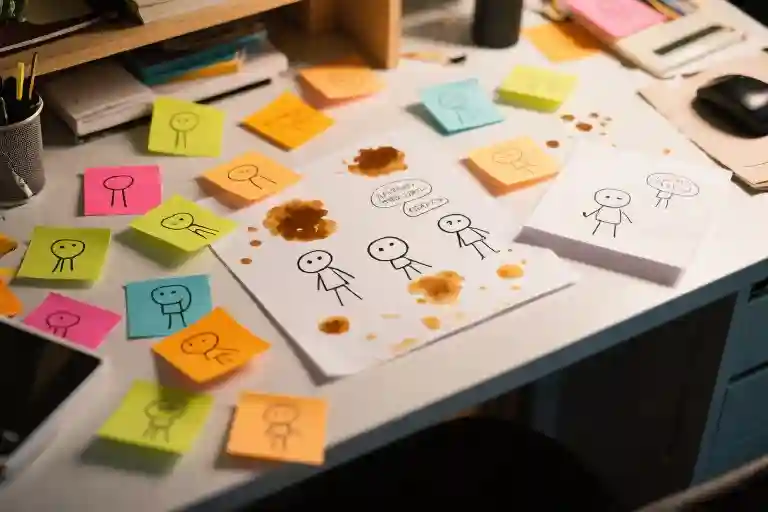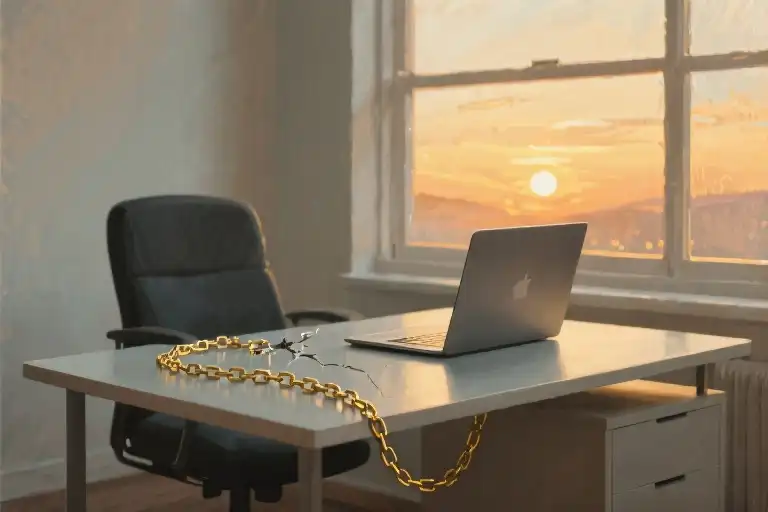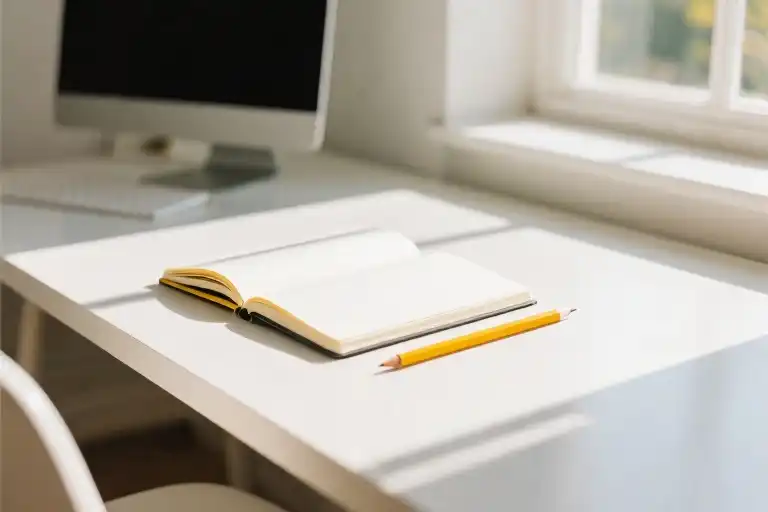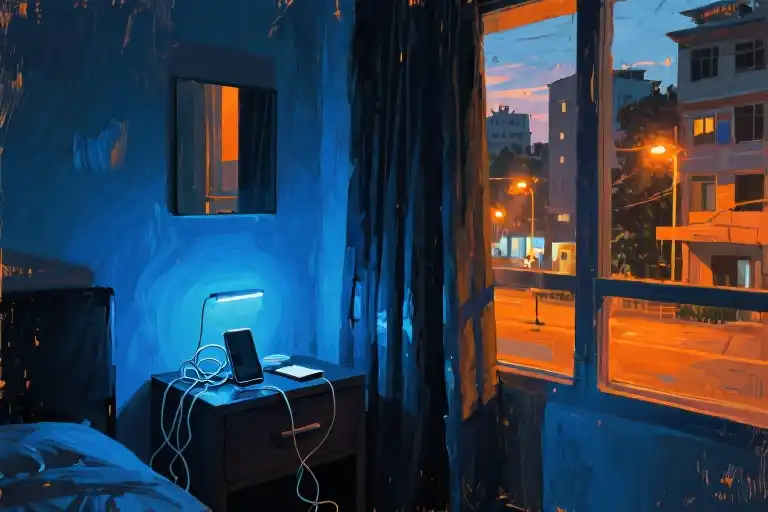The third time I fished my phone out of the washing machine, something snapped. Not the phone—miraculously it survived—but whatever last shred of belief I had in traditional productivity systems. There I stood, dripping wet smartphone in hand, staring at the floating laundry pods like they were mocking my ADHD brain. That’s when I started drawing my to-do lists as stick figure comics.
We’ve all been taught that the solution to chaos is more organization. More lists. More color-coded calendars. More apps that ping us with judgmental notifications. But for those of us with brains that treat object permanence as a vague suggestion, these abstract systems might as well be instructions written in invisible ink. The harder I tried to fit into neurotypical productivity molds, the more I found myself drowning in half-finished planners and self-loathing.
What changed? I began treating my mental shortcuts not as failures but as data points. That moment with the washing machine became my first haiku comic: three messy panels of a wide-eyed stick figure holding a soapy phone, captioned with seventeen syllables about imperfect progress. It stuck to my fridge with a pizza-shaped magnet, silently reminding me that sometimes survival looks ridiculous.
This isn’t another article about hacking your productivity. If you’re here, you’ve probably bookmarked dozens of those already (and forgotten where you saved them). This is about what happens when we stop trying to fix our brains and start creating systems that work with them—systems that acknowledge object permanence issues, time blindness, and all the other wonderfully frustrating ways an ADHD mind operates. For me, that system involves turning my most chaotic moments into visual artifacts I can’t ignore.
The comics aren’t pretty. My drawing skills plateaued around age seven, and my haikus would make poetry professors weep. But that’s precisely why they work. In their clumsy lines and uneven syllables, I see permission to be exactly as I am—a work-from-home dad with four kids, a buzzing mind, and a phone that probably needs another trip through the rinse cycle.
When Time Feels Like a Leaky Sieve
The clock on my phone says 8:17 AM. My daughter’s school zoom meeting started two minutes ago. I’m still in pajamas, one sock on, searching for the other in a pile of unfolded laundry. My brain helpfully supplies: You had all morning to prepare for this. Typical failure. This is what ADHD time blindness looks like in the wild – the cruel magic trick where hours evaporate while you’re blinking.
Research from the Journal of Attention Disorders shows 89% of ADHD adults experience ‘time perception distortion.’ We either drown in molasses-slow minutes or get sucked into hyperfocus vortexes where entire afternoons disappear. Traditional productivity tools become instruments of torture. That color-coded planner? Just a guilt catalog. The Pomodoro timer? A tiny judge hammering away at my self-worth.
Last month, I missed parent-teacher conferences because my brain filed the reminder under ‘hypothetical future events’ alongside retirement planning and colonoscopy prep. The aftermath followed our family’s familiar pattern: frantic apologies, compensatory overpromising (‘I’ll set twelve alarms next time!’), then days of mental replay where I narrated my failure in third person like a sports commentator: And here we see the ADHD dad flailing again!
Normal time management advice assumes your brain has functional filing cabinets. Mine resembles a kindergarten classroom after a glitter bomb explosion. Telling someone with executive dysfunction to ‘just use a calendar’ is like handing a fork to someone trying to eat soup. The tools don’t match the wiring.
What finally clicked was realizing my brain responds better to visual anchors than abstract timelines. When words failed, cartoons spoke. That missed parent meeting became my first therapeutic doodle – a stick figure me with alarm clock eyes, floating in space with the caption: Time isn’t lost if you draw where it went.
This discovery didn’t fix my neurological wiring. Some mornings still dissolve into chaos. But now when time slips through my fingers, I’m learning to catch the stories instead of just counting the losses.
Packing Meltdowns Into Comic Squares
The morning chaos unfolds with predictable precision: oatmeal smeared across pajamas, a missing shoe discovered in the freezer, and that familiar tightness in my chest as the clock ticks toward another missed meeting. For years, I fought these moments with color-coded planners and productivity apps that only amplified my ADHD-fueled shame. Then I stumbled upon an unexpected ally – a half-empty notebook and a four-color pen from my daughter’s backpack.
The 3B Survival Kit emerged from necessity:
- Burst – Capture the emotional peak (a screaming coffee cup)
- Brief – Contain it in 17 syllables (“Steaming rage in porcelain/Hold the warmth, not the hurry/Spilled drops bloom slower”)
- Blob – Sketch the essence (three lopsided circles with angry eyebrows)
Last Tuesday’s disaster transformed when I drew the scene: a stick-figure me juggling a laptop, baby bottle, and burning toast. The accompanying haiku (“Five alarms chorus/None for the sippy cup’s plea/D minor symphony”) now lives on my fridge, serving as both warning and absolution. There’s neuroscience at work here – visual symbols bypass our overloaded working memory like emergency exits for overwhelmed brains.
Parental guilt takes on new dimensions when my six-year-old started drawing her own versions. Her “Monster Daddy” series (complete with spaghetti hair and phone-shaped eyes) became our shared language for tough days. The crude drawings accomplish what a hundred parenting books couldn’t: they make our struggles visible, laughable, survivable.
What makes these scribbles more effective than sophisticated tools? They honor how ADHD minds operate – in flashes of insight rather than linear progress. The coffee stain on yesterday’s comic reminds me that imperfection isn’t failure; it’s the texture of a life being lived. Some mornings, the most productive thing I do is redraw the same angry alarm clock for the fourteenth time. Each iteration wears softer edges, until the urgency loses its fangs.
Your version might involve camera roll screenshots with three-word captions, or napkin doodles during lunch breaks. The magic lies not in artistic skill, but in the act of pressing pause on chaos long enough to say: This moment too belongs to my story.
The Healing Power of Imperfect Art
For years, my mental blueprint for productivity resembled a military operation – color-coded schedules, precisely timed breaks, and the relentless pursuit of flawlessly executed plans. Each deviation felt like personal failure, each interruption proof of my inadequacy. The crumpled planners in my recycling bin told the story: I kept trying to fix my ADHD rather than work with it.
Then came the Tuesday morning when my toddler finger-painted with my coffee while I frantically searched for misplaced car keys. Instead of my usual spiral of self-recrimination, something shifted. I grabbed a sticky note and drew a stick figure version of the scene with a three-line caption:
Coffee becomes paint
Keys hide like shy raccoons
This chaos has rhythm
That crude drawing became my first therapeutic comic. Unlike the abandoned planners, I kept returning to it – not as evidence of failure, but as a curious artifact of my actual life. The imperfections made it real, the humor made it bearable, and the visual format made it stick in my erratic memory.
From Self-Judgment to Self-Observation
Traditional productivity advice operates on a simple equation: Identify problem → Apply solution → Achieve perfection. For neurodivergent minds, this linear model often backfires spectacularly. My breakthrough came when I realized my comics weren’t tools for fixing mistakes, but containers for holding experiences without moral judgment.
Consider two approaches to the same parenting meltdown:
Old Mode (Text Journal):
“7:32 PM – Failed again. Lost temper during bedtime. Why can’t I stay calm like other dads? Tomorrow: stricter routine, more patience.”
New Mode (Haiku Comic):
Panel 1: Stick-figure dad with steam from ears
Panel 2: Child’s speech bubble “But WHY can’t dragons eat tacos?”
Caption: Bedtime questions fly
Like determined mosquitos
Tomorrow we’ll try
The journal entry reinforces shame through its clinical timestamp and binary framing (success/failure). The comic captures the same event but allows for nuance, humor, and inherent worth despite the struggle. Over time, this practice reshaped my internal narrative from “I must eliminate imperfections” to “My imperfections have their own beauty.”
The Neuroscience of Self-Compassion
Recent art therapy research helps explain why this approach works for ADHD brains. When we create visual representations of stressful events:
- The amygdala’s threat response decreases (no longer perceiving mistakes as dangers)
- Prefrontal cortex engagement increases (building emotional regulation capacity)
- Dopamine release occurs (rewarding the creative act itself)
One study in The Arts in Psychotherapy found that just 20 minutes of simple drawing after stressful events lowered cortisol levels more effectively than written journaling. For those of us with executive function challenges, this is revolutionary – we’re not avoiding self-reflection, we’re making it neurologically accessible.
A Mother’s Story: Doodles Rebuilding Connection
Sarah, a single mom with ADHD, shared how this practice transformed her relationship with her sensory-sensitive son:
“After particularly rough days, we started drawing ‘What Happened Today’ comics together – his version and mine. Seeing our clashes through his childish drawings… it removed the blame. Now when I feel overwhelmed, I hear his little voice saying ‘Mommy, should we comic this?’ That question alone stops my spiral 80% of the time.”
Her experience mirrors what psychologists call externalization – taking internal struggles and giving them tangible form outside ourselves. In comic format, problems become characters we can observe rather than flaws we embody.
Your Turn: The 3-Minute Messy Masterpiece
Here’s how to begin tonight:
- Recall one recent “failure” (burnt dinner, missed deadline, parenting lapse)
- On any scrap paper, divide space into 3 panels
- Panel 1: Draw the situation (stick figures welcome!)
- Panel 2: Add one exaggerated detail (think coffee cup with tornado)
- Panel 3: Write a 3-line caption acknowledging both struggle and humanity
File it somewhere visible. Notice how your relationship to that memory changes over days. Unlike polished self-help strategies, the power lies precisely in the roughness – those shaky lines proving you showed up authentically.
As my growing collection of wonky drawings reminds me: Progress isn’t about eliminating mistakes, but collecting their stories with kindness. Each imperfect comic becomes a flag planted in the territory of my real, messy, beautiful life.
The Last Panel
Grab the nearest scrap of paper—receipt, napkin, grocery list—and draw a single rectangle. Inside it, sketch your first “failure” of the day. Not the Instagram-worthy highlight, but that moment when your ADHD brain short-circuited: maybe you poured orange juice into your coffee, or missed an email for the third time.
This isn’t about fixing. It’s about bearing witness.
For years, I treated my stumbles like software bugs to be patched. Then I noticed something peculiar: the haiku comics I’d drawn about my meltdowns became lifelines. That cartoon of me sobbing over spilled milk (literally) now makes me chuckle. The hastily sketched laptop engulfed in flames after a missed deadline? Turns out the world didn’t end.
Here’s the neurodivergent magic no productivity guru teaches: when you externalize chaos as art, it stops being a verdict on your competence and starts being… just a thing that happened. A panel in your ongoing graphic novel of imperfect humanity.
So what if we measured growth not by erased errors, but by the gallery we’ve collected? That time you forgot your kid’s recital lives alongside the sketch where they laughed at your ridiculous apology dance. The burned dinner coexists with the haiku about smoke alarms singing backup to your cooking.
Your turn. Don’t aim for profundity—draw your flub as a stick figure if needed. The act of framing it changes everything. That crumpled post-it becomes proof: you’re not failing at life, you’re curating evidence of living it.
Final thought: What if your most “unproductive” moments are actually the panels future you will treasure most?





